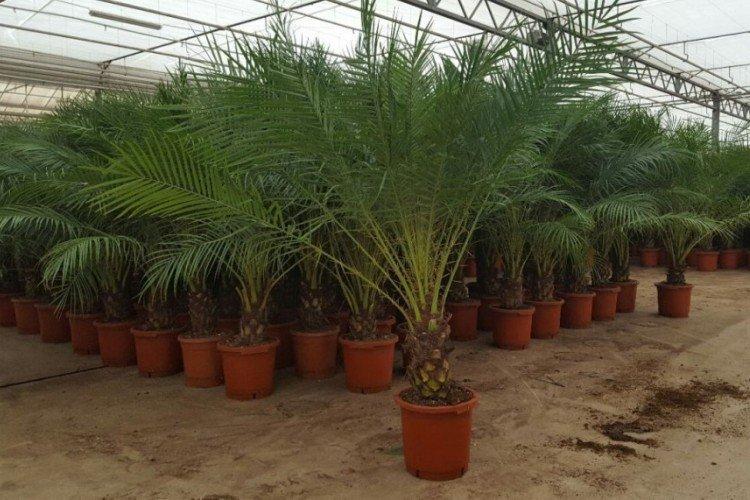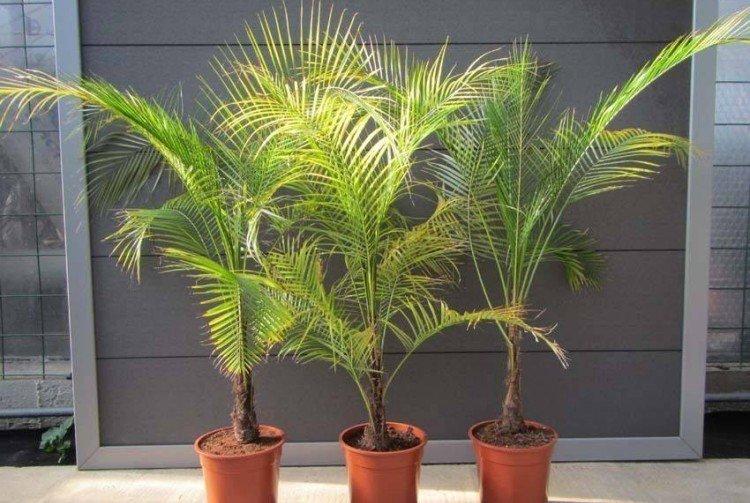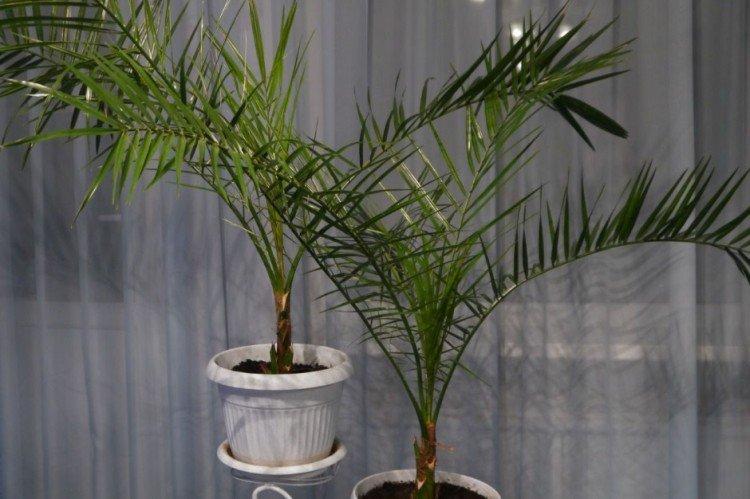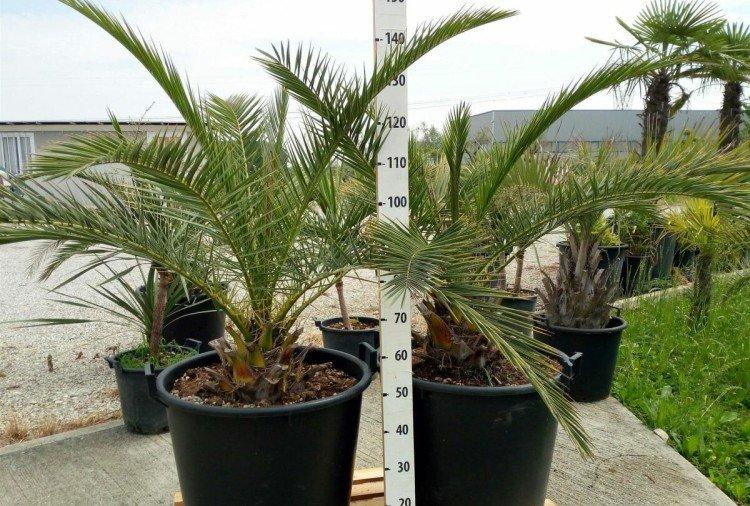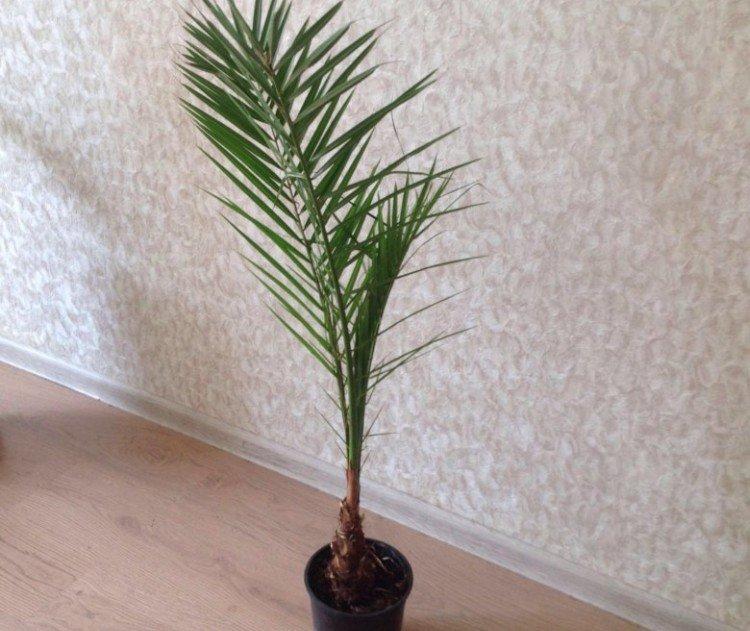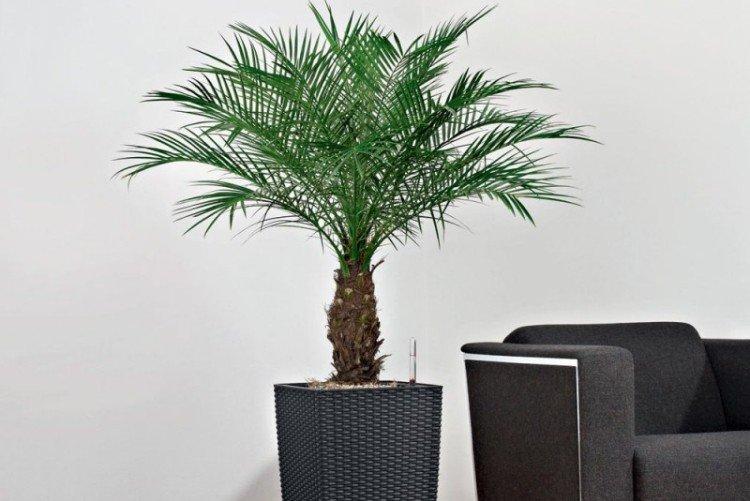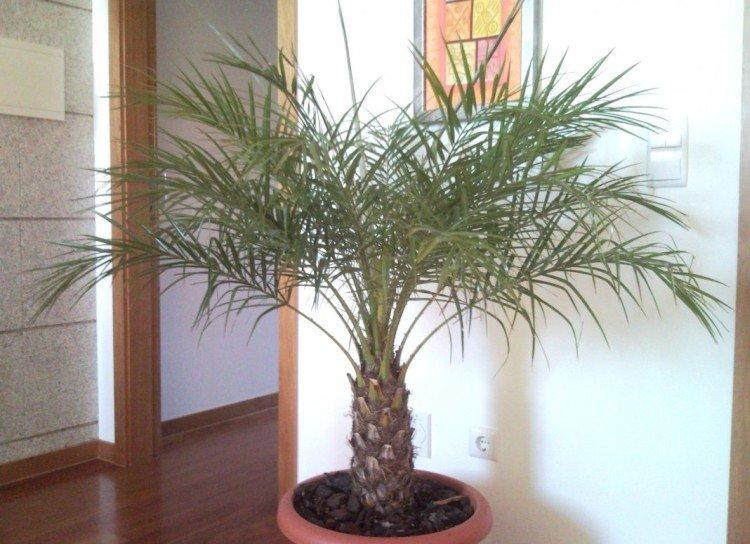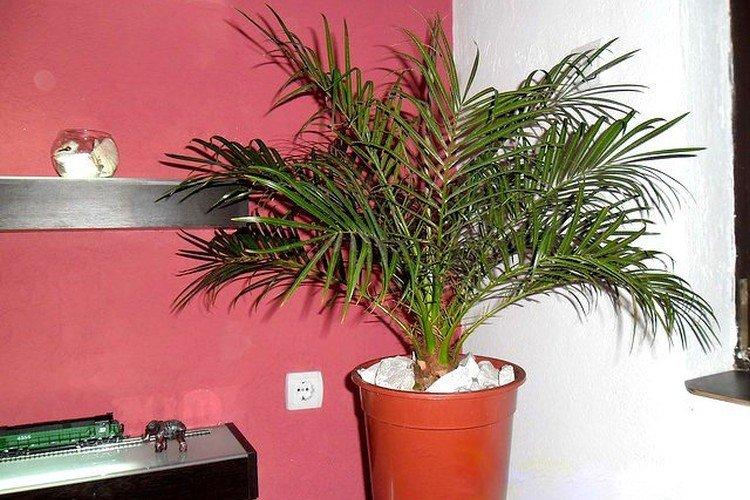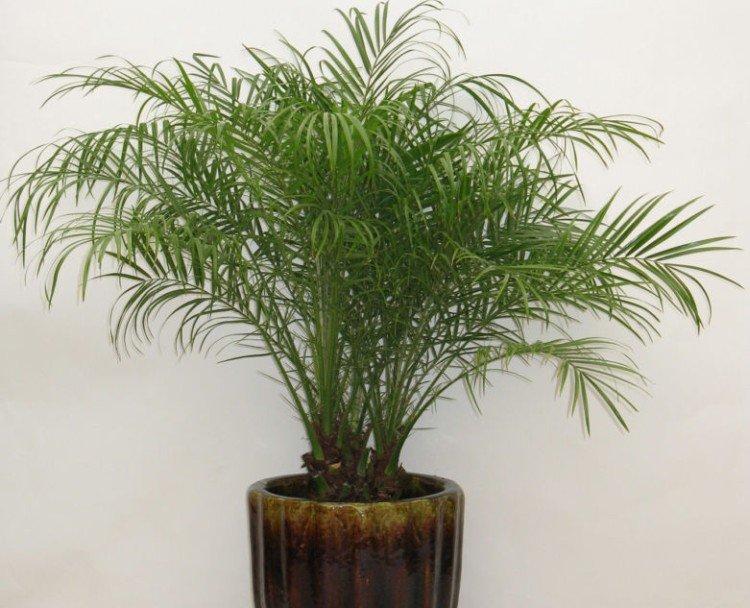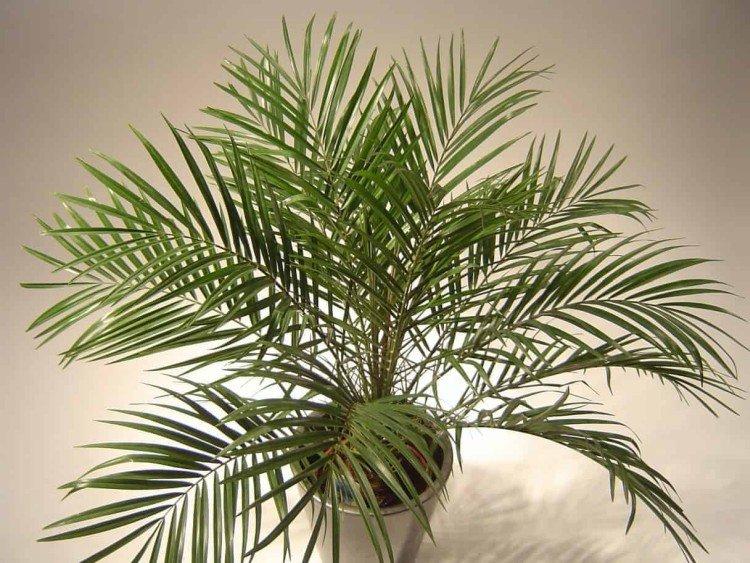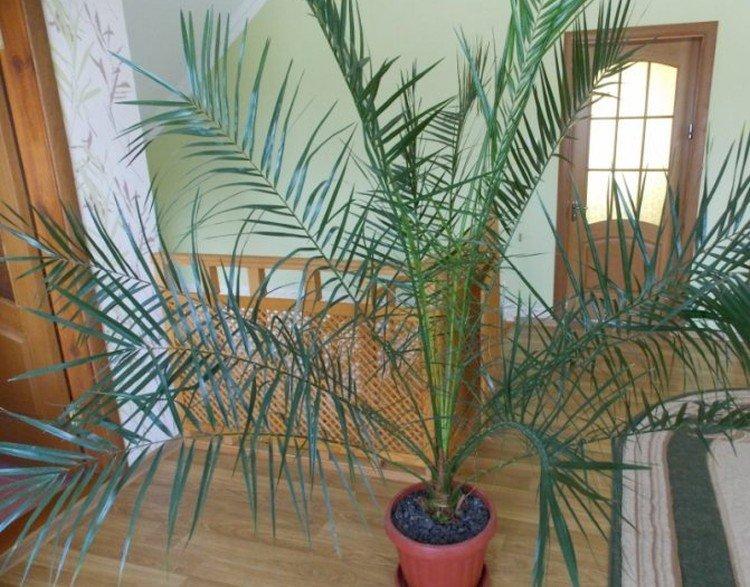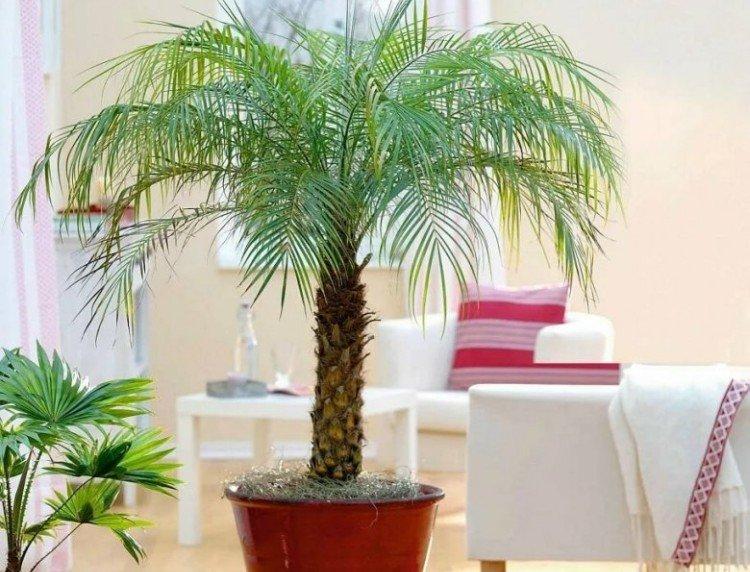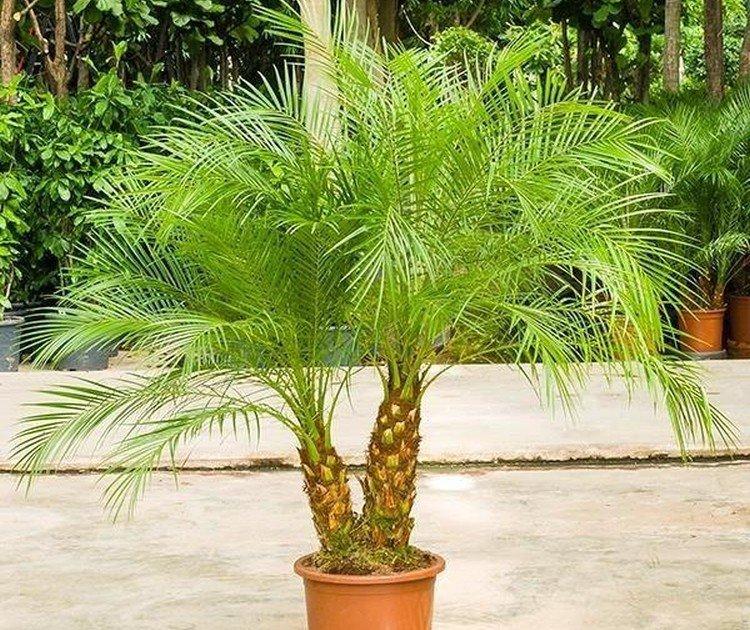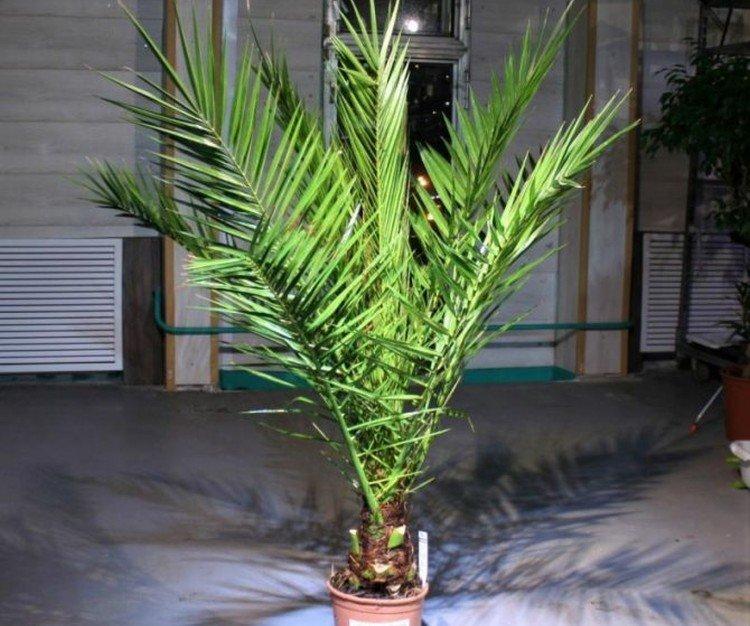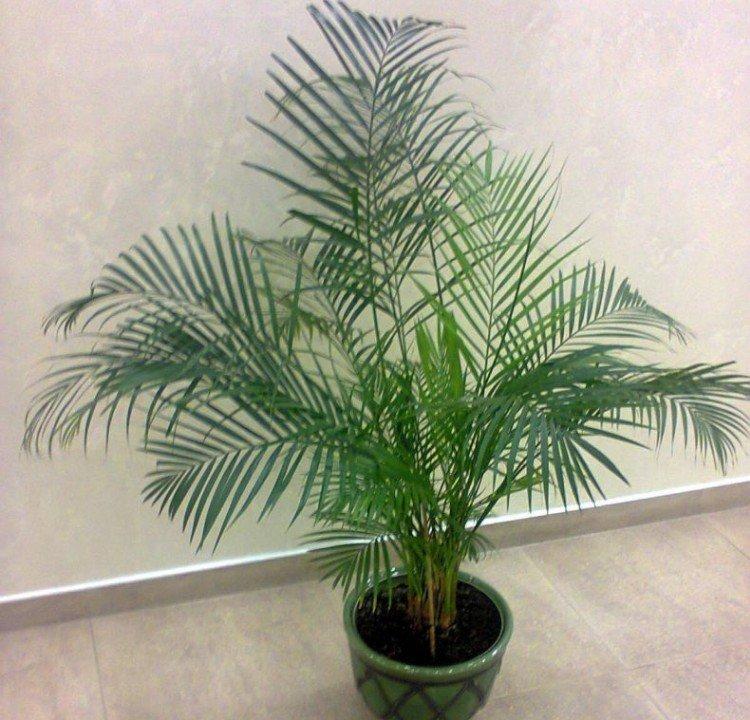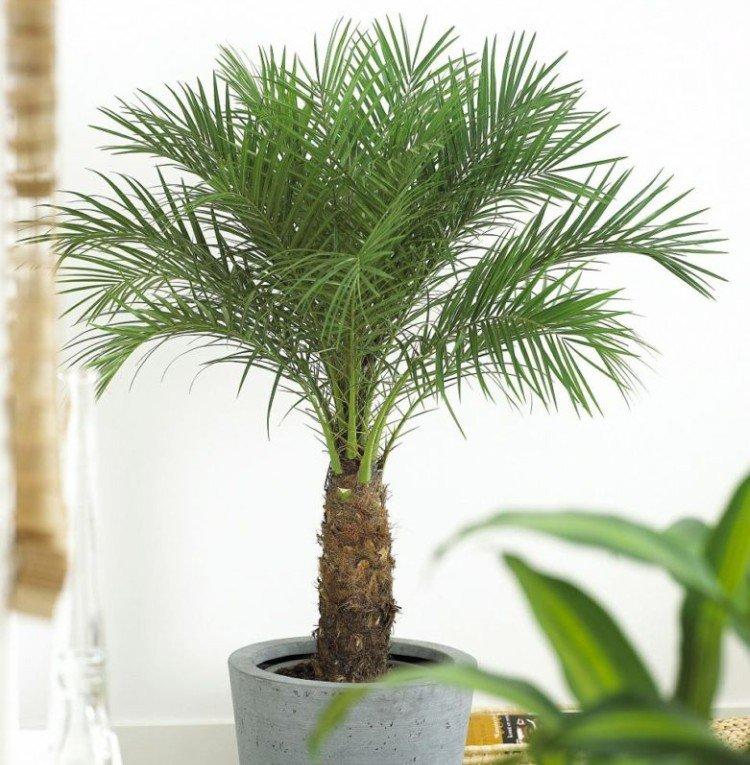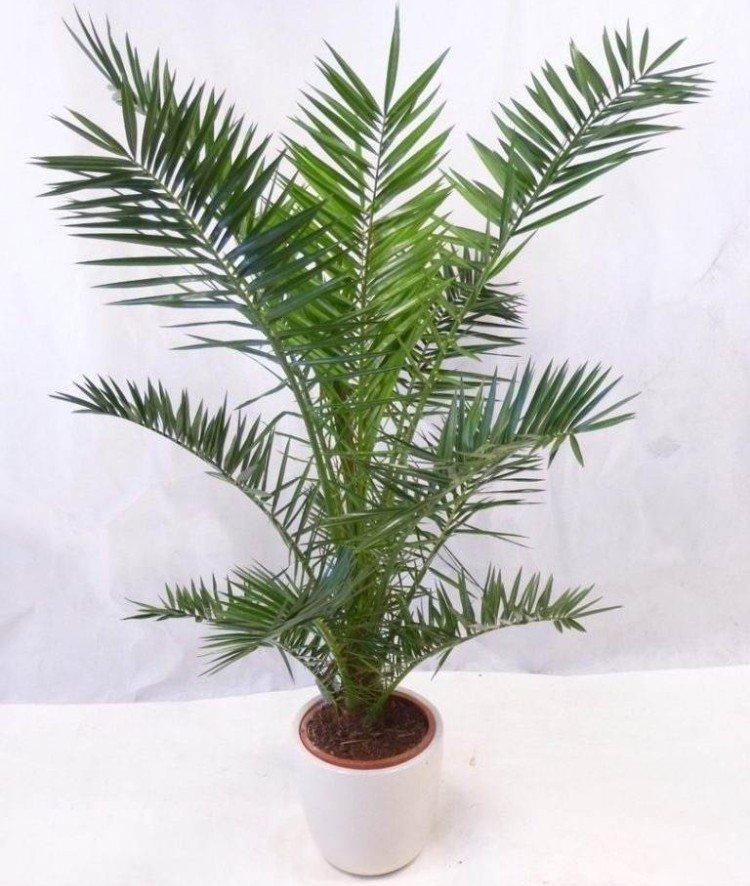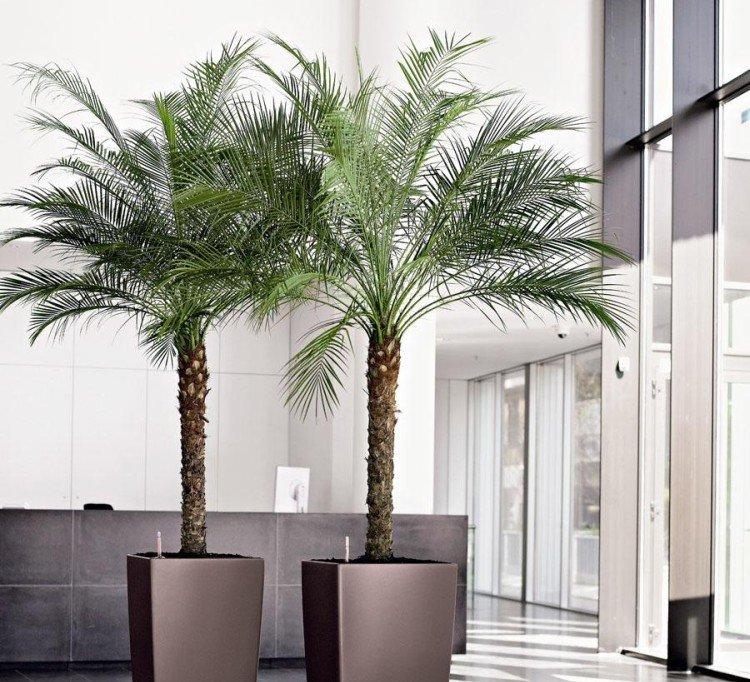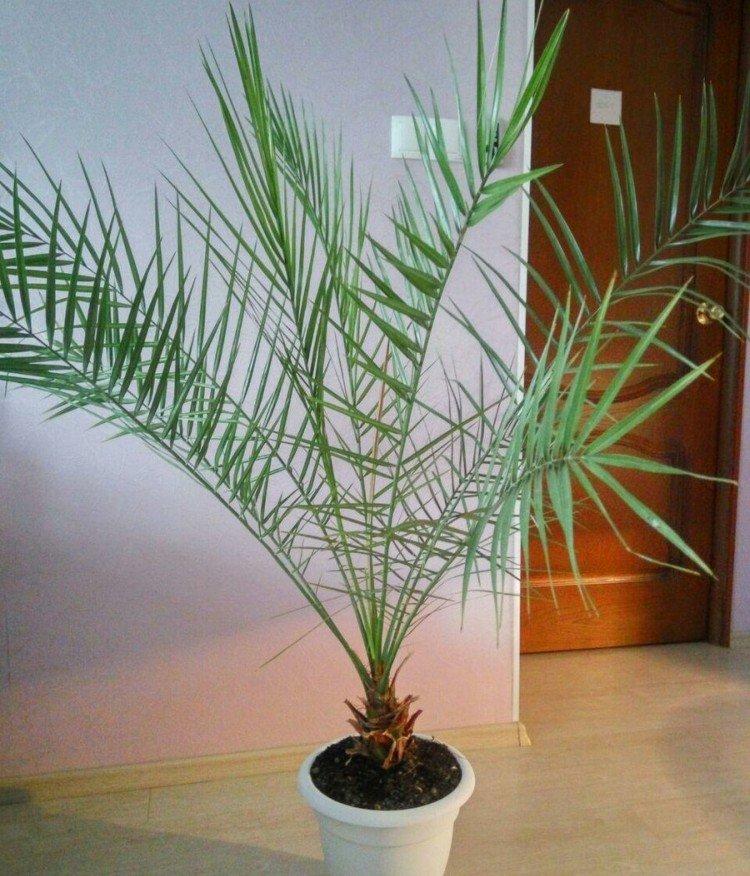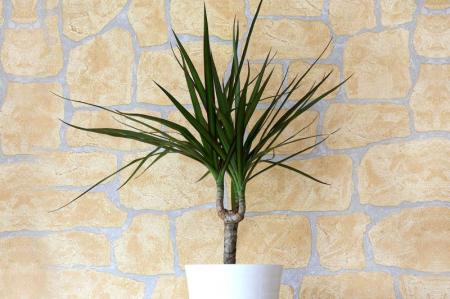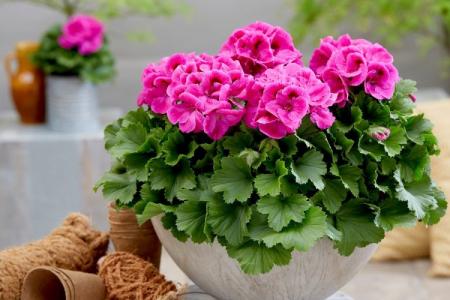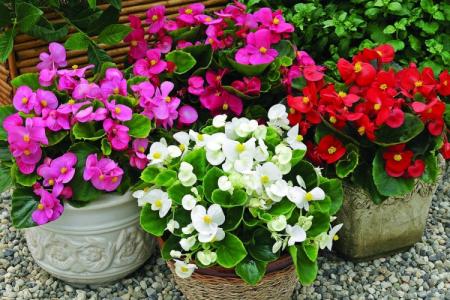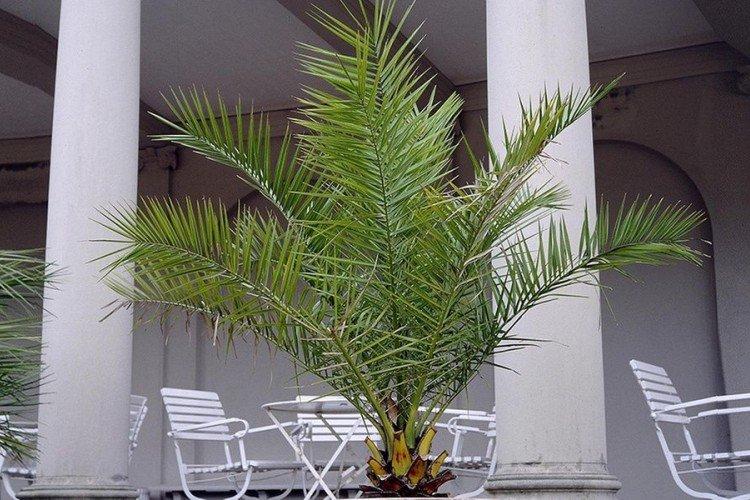
The exotic date palm looks like it has just been brought from distant African countries. Although in fact it can be grown at home even in our latitudes. We will tell you how to do it and what to look for!
general information
The date palm grows in Africa and Asia, and also in our apartments and offices. This is one of the most popular palms among florists. It has long feathery leaves that look very beautiful. And she is not at all capricious!
The cultivation of palm trees "for beauty" has been practiced since the nineteenth century. The date palm can even be grown independently from the seed, although this is a too long process.
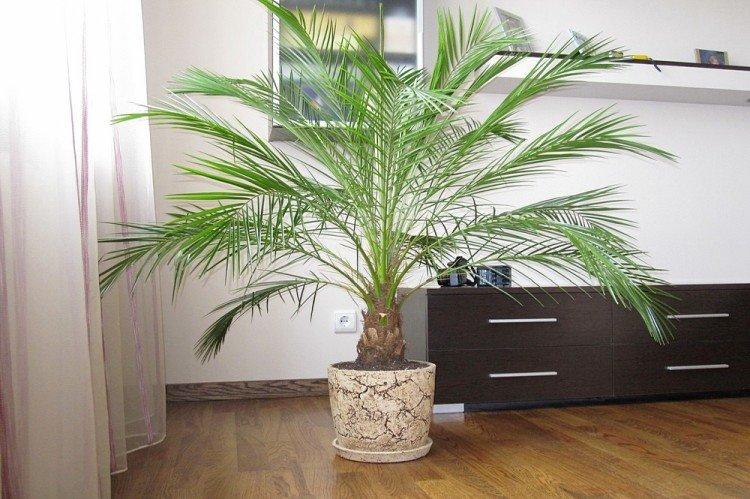
Date palm species
There are much more date palms in nature, but only three main species have taken root in apartments. They are distinguished by increased unpretentiousness, the ability to adapt to different conditions and excellent decorative qualities.
Date Robelena
It has a powerful, thick and short trunk, which is densely covered with bent scales. It can be a little fuzzy and generally resemble pineapple. The leaves of this date are very narrow and feathery.
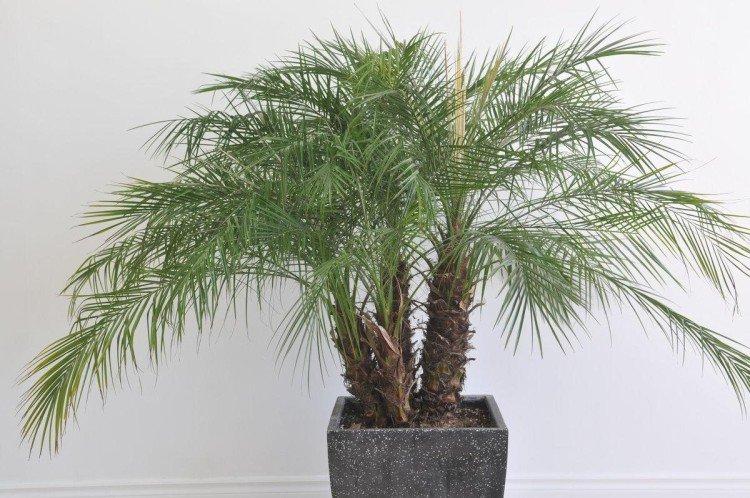
Finger date
It attracts primarily by the fact that it takes root well and grows quickly. Of the minuses - as it grows, the lower part of the trunk is gradually exposed.
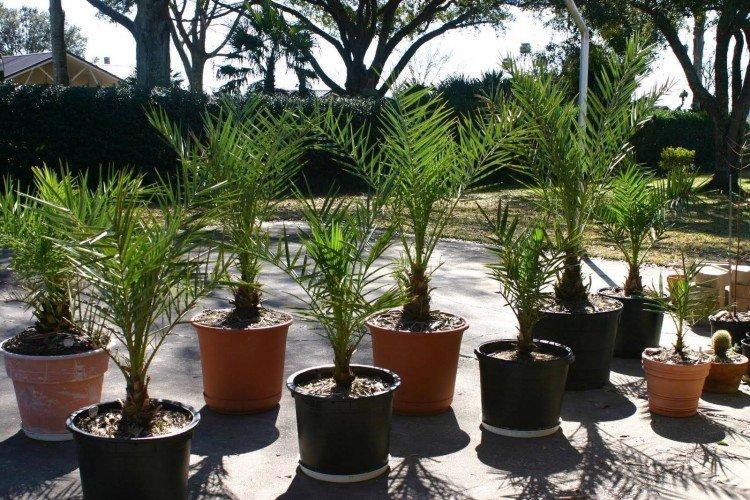
Canary date
A very unusual palm tree that has almost no trunk at all. It seems that the leaves are scattering to the sides directly from the ground, forming a basal rosette. But these leaves are spectacular, large and curved.
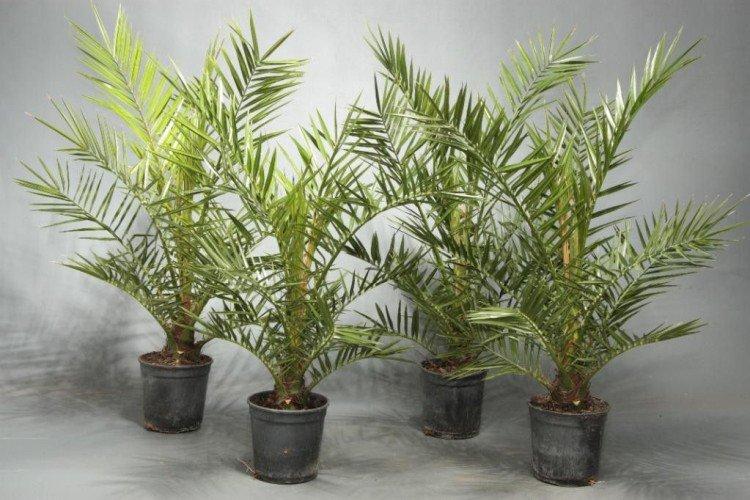
Date palm care
The date palm is resilient and unpretentious, so it is a good choice for beginners looking for something exotic. With proper care many years later, it can grow into a real tree up to 2 m tall!
Temperature
The date palm is completely satisfied with the usual room temperature without any frills. The most thermophilic is the Robelen date, for which you should not drop the temperature below +15 degrees, even in winter.
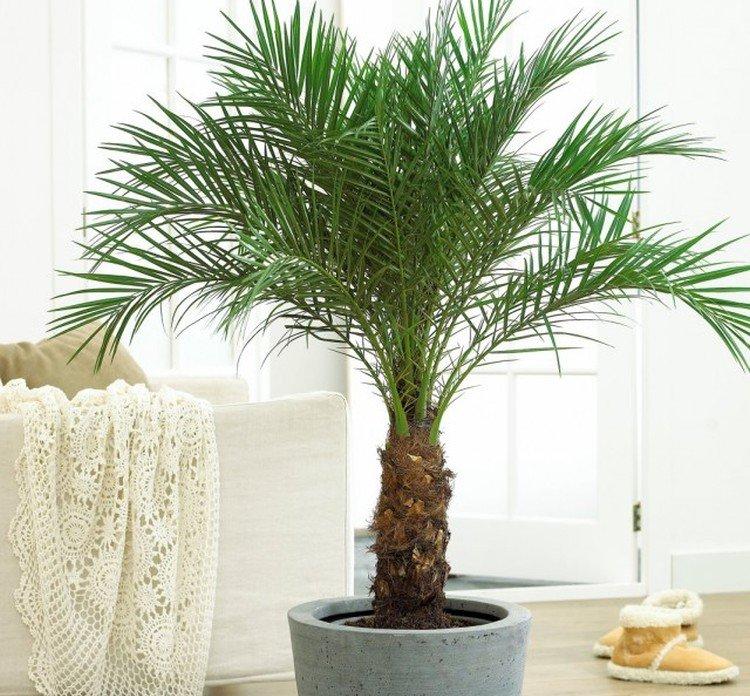
Lighting
Palm trees feel great on the southern windows and are not afraid of the bright direct sun. In the summer they can be taken out onto the balcony. But the lack of light very quickly affects the decorativeness of the leaves, which in this case grow elongated and drooping.
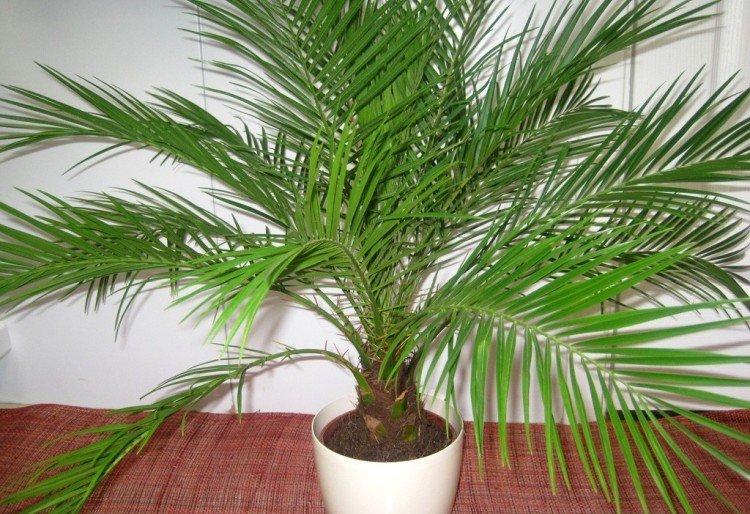
Watering
In summer, the palm tree needs to be watered almost every other day, because it reacts sharply to dryness. In winter, it all depends on the air temperature: the lower it is, the less often watering. Plus, dates love sprays and even warm showers.
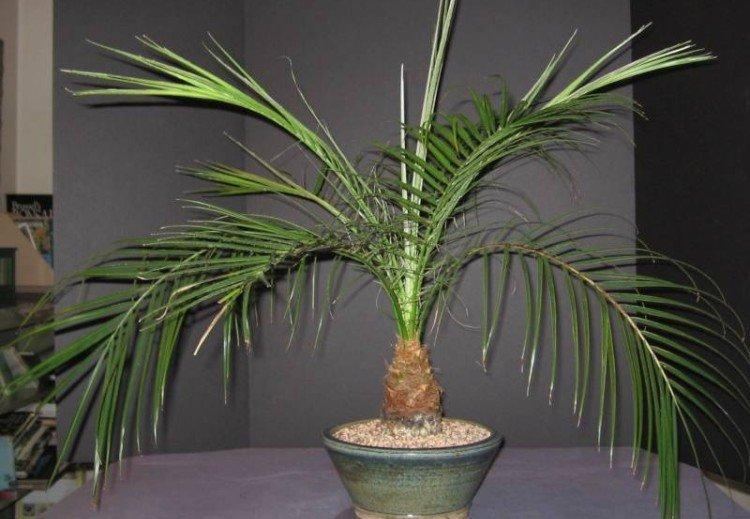
The soil
There are now many ready-to-use mixtures specifically for palm trees, so you don't even have to figure it out on your own. Universal soil for hardwood is also fine, but we recommend adding turf and sand to it. Mature palms like more peat.
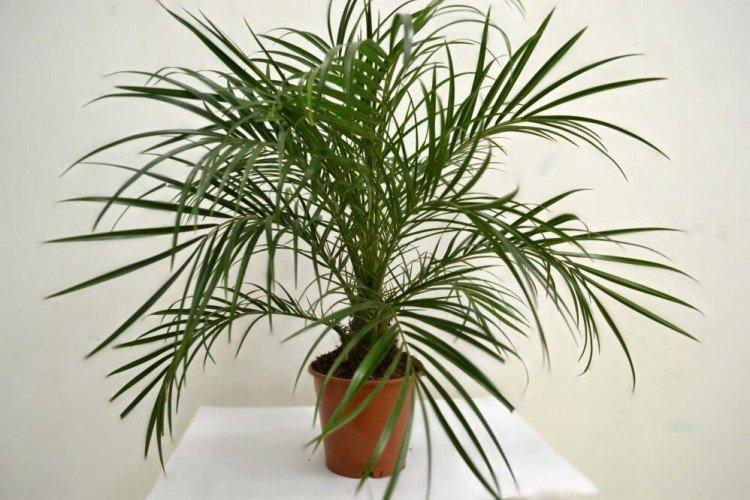
Fertilizers and feeding
Feeding the date palm is optional, but you can do it as you wish. Complex liquid fertilizers, which are applied during watering every few weeks, are suitable.
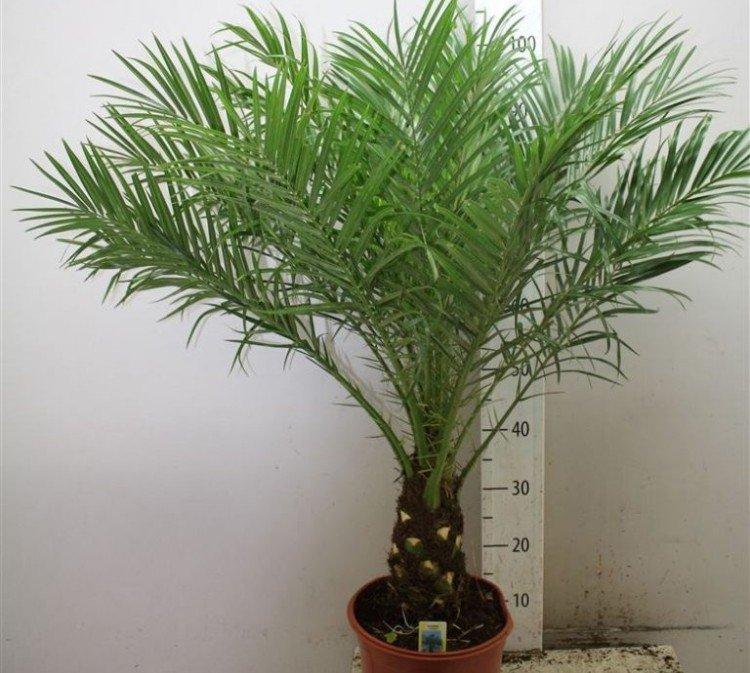
Transfer
Even with its unpretentiousness, the date palm does not tolerate transplanting well, so they do it only in case of urgent need and carefully with all the earthy clod. Young plants will need to be replanted more often as they grow. Vases are needed not wide, but deep, and with a good drainage layer.
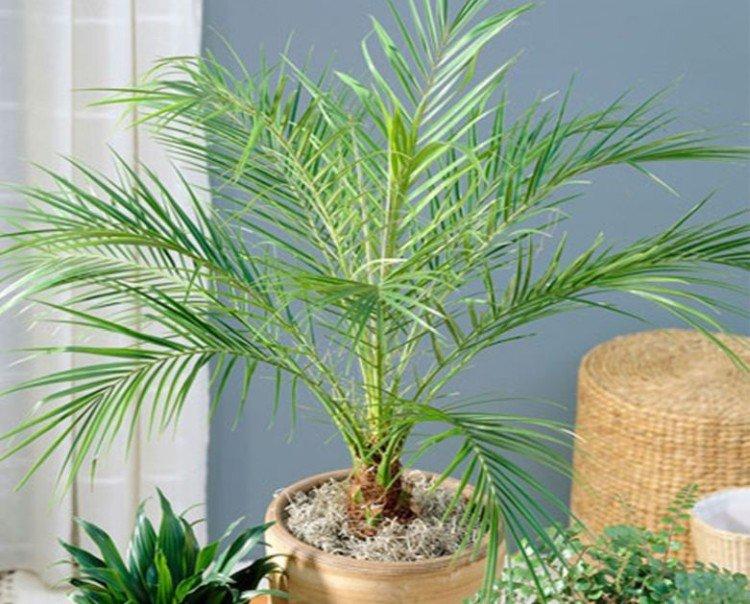
Pruning
Broken, dead and too bent leaves should be pruned regularly. But just leave the yellowing and dying ones - from them the plant draws out useful substances. It is especially important not to damage the trunk during the trimming process. Also, you cannot remove more leaves than has grown in a year.
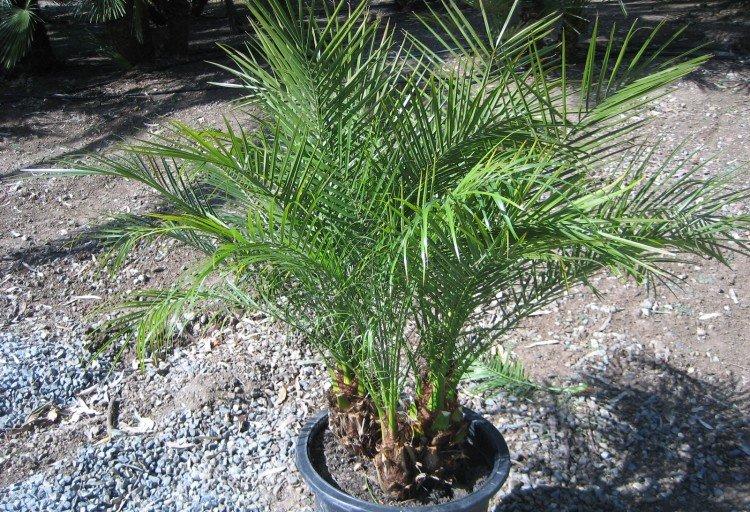
Planting and breeding date palm
If you want to sprout a palm tree from a seed, you first need to soak it for a couple of days, changing the water. After that, it is vertically rooted in a mixture of peat and sand, and covered with wet sphagnum or glass on top. For germination, a high temperature is needed - from +25 degrees. Seedlings will appear in a few months.
When the first leaf stretches at least to 2-4 cm, the seedlings need to be transplanted into separate flowerpots. This usually takes about 8-9 months. But the next 5-7 years will be spent on strengthening the future tree. For this reason, it is often easier to buy an already mature palm tree.
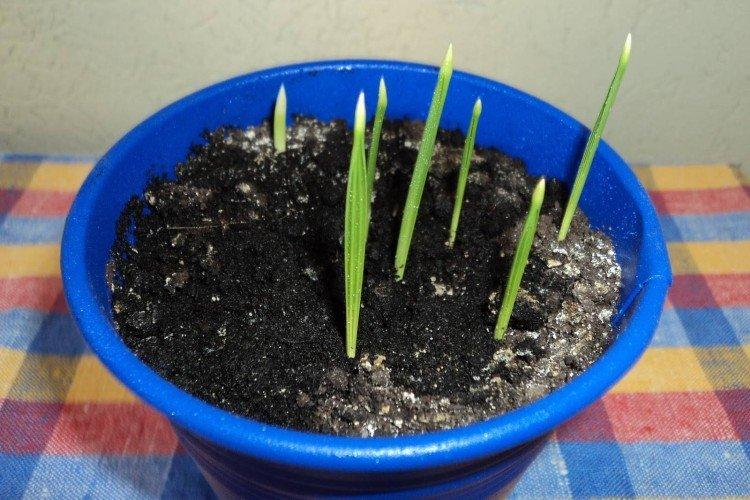
Pest and disease control
Due to too dry air, the palm is affected by the scale insect, due to which the leaves dry and become covered with spots. A whitish spider web is a sure sign of a spider mite. In both cases, the plant must be isolated, the leaves must be carefully washed with soapy water, and insecticides must be used as needed.
The base of the palm tree rots, and new shoots easily break off due to waterlogging of the soil. If the damage to the rhizome is not yet too fatal, transplanting, fungicides and minimizing the frequency of watering are enough.
With high humidity, using cold water and too low temperatures, the date palm can suffer from fungus. Here it is important to carefully cut out the damaged fragments and use medicinal preparations for indoor plants as soon as possible.
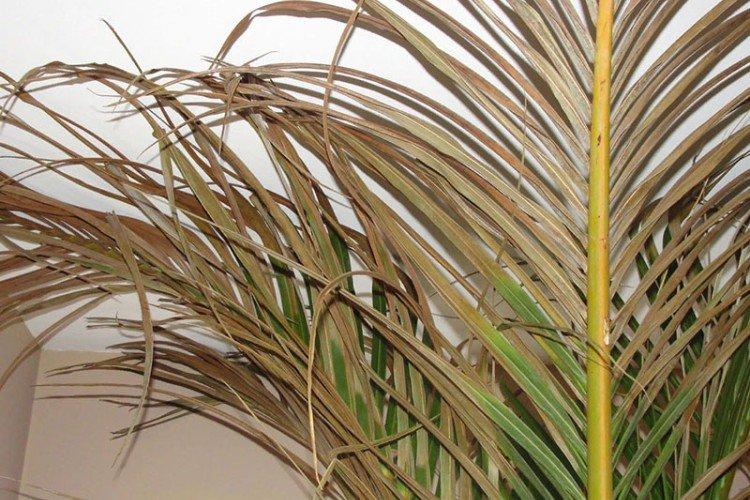
Date palm - photo
The small date palms look very modest but charming. And adults turn into real exotic beauties. Just look!
